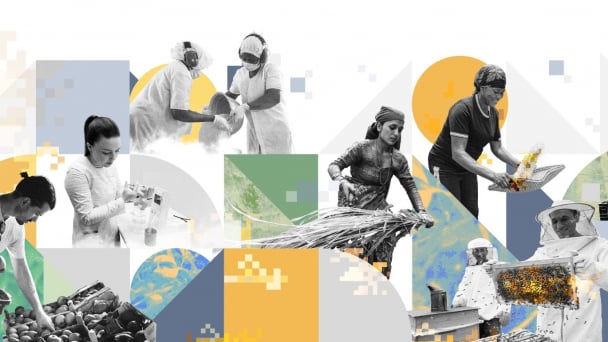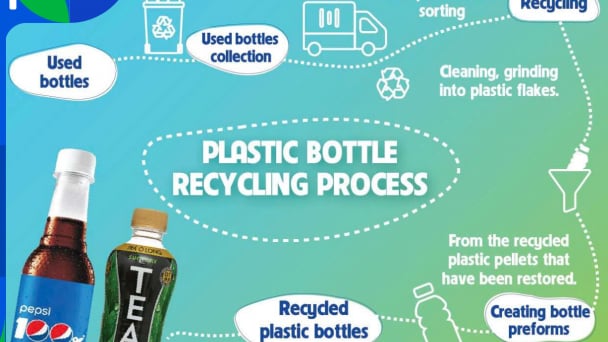June 20, 2025 | 01:11 GMT +7
June 20, 2025 | 01:11 GMT +7
Hotline: 0913.378.918
June 20, 2025 | 01:11 GMT +7
Hotline: 0913.378.918
Vietnam is known as one of the world's leading rice exporters, with an export output of about 6.3 million tonnes of rice per year. Particularly, in the first five months of 2022, rice exports brought the country US$1.4 billion.

Vietnam is known as one of the leading countries in the world in terms of rice exports. Photo: Kim Anh.
Vietnamese rice is also facing difficulties when food protectionism and inflation increase across economies, especially the conflict in Ukraine has caused increasing prices of many types of commodities, especially the prices of petrol, fertilisers, pesticides... have increased unprecedentedly.
In order for Vietnam to maintain its position as a leading rice exporter, with high quality rice, competitive rice prices, and high economic value for businesses and farmers, it is necessary to solve problems relating ti rice varieties, food safety, logistics, cost of input production materials and technology as well as capital for production and export.

Workshop "Opening up the flow of Vietnamese rice" is organised by Labour and Trade Union Magazine. Photo: Kim Anh.
Nguyen Quoc Toan, Director of the Department of Agricultural Product Processing and Market Development (MARD), pointed out that the bottlenecks in linking production and consumption are hindering the development of the rice industry. According to Toan, to develop rural agriculture, the Government issued many important strategies in recent years. At the beginning of this year, the Government also set out breakthrough strategies for the agricultural sector, in which rice also identified as a strategic industry. However, in practice, problems remained in linking farmers with market.
“The rice industry should not stop at more than $3 billion in export sales a year. We can reduce output but increase in value. To do that, market experts, more than ever, must provide useful information through the role of industry associations. It is a must to consolidate the domestic market, build a brand," said Toan.
Toan said that it was necessary to build a linkage in the spirit of voluntariness and responsibility of enterprises, cooperatives and farmers. In this linkage, the state management agencies play the role of promoting and supporting the construction of infrastructure in the linked region, promoting the role of community agricultural extension groups to create a strong enough linkage, large rice area. Besides, the stages of post-harvest preservation, processing, and mechanization in agriculture also play an important role in the economic development of agricultural commodities.
Most especially, Mr. Toan informed, at present, the agricultural sector, along with farmers and cooperatives, responding to difficult situation of the market, farmers need to have methods to save input costs.
Exporting enterprises must actively seek new markets.
Sharing the same view, Bui Kim Thuy, an economic integration expert, analyzed that to open up the rice market, businesses need to focus on branding. Vietnam is a developing economy, and has the advantage of joining most of the major global economies through free trade agreements. However, few Vietnamese exporters use their own brands.
Opening up the rice export market lies in technical barriers, trade remedies, food security, quotas, and tariffs, etc.
Vietnam is still subject to defensive measures and tax rates, especially those from China. Thuy said that when exporting rice in large quantities, in a short time to a market, Vietnam may bear many risks of tariffs.
"Rice is a sensitive product so trade barriers pose risks," she said.
Commenting on the position of Vietnamese rice in the world market, Nguyen Chanh Trung, Deputy General Director of Tan Long Group analyzed, Vietnam's rice export market has long been compared with that of Thailand.
However, Vietnam's rice varieties are quite diverse, short rice, round rice with many varieties that Thailand and Cambodia do not have. In particular, in Vietnam, fragrant rice varieties are very diverse, penetrating into new markets.

Nguyen Chanh Trung, Deputy General Director of Tan Long Group acknowledged that Vietnamese rice can compete fairly with Thailand. Photo: Kim Anh.
Trung added that depending on the time of harvest, the profit level will be assessed. When it is in temporary storage, it depends on the export market of the enterprise.
“Vietnamese rice is usually harvested every three or four months. If the rice export to a market is slowed down, inventory will increase, affecting prices," Trung said.
Trung said that it was necessary to have a plan to expand farming area. Businesses need to build a long-term plan, have good seeds, good preservation, storage, and post-harvest treatment methodically.
“Excellent, delicious varieties, but left for too long, traffic jams, slow post-harvest processing, the rice is sour. Once inefficient businesses are slow to export to foreign countries, and their rice will be returned," Trung said.
Translated by Hien Anh

(VAN) Biodiversity is being threatened by traditional remedies made from wildlife. Traditional medicine and humans must change to live in harmony with nature.

(VAN) Agrifood investment and finance solutions for people and the planet.

(VAN) Microplastic contamination has become pervasive in seafood, posing unprecedented challenges for food safety and marine ecosystems.

(VAN) Proactively using vaccines, combined with transport control and enhanced surveillance, is the only viable path toward biosecure and sustainable livestock production in Vietnam.

(VAN) Located in the southeast of Ho Chi Minh City, the Can Gio Mangrove Biosphere Reserve is considered the ‘green lung,’ a solid shield protecting the city.

(VAN) To address plastic pollution, closing the plastic recycling cycle will bring significant economic and environmental benefits.

(VAN) According to the Binh Thuan Department of Industry and Trade, in the first five months of 2025, Binh Thuan's dragon fruit export turnover increased by 20.65% compared to the same period last year.